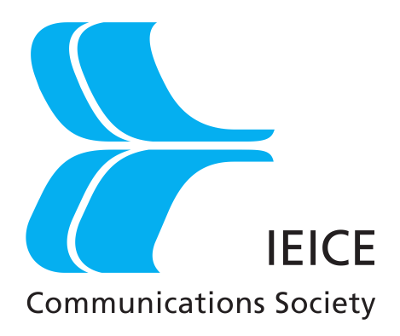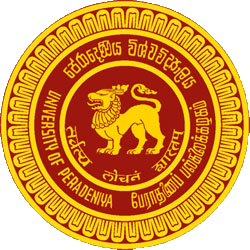
IV-1-1 Invited Talk 1
- "Reimagining commerce in the mobile first world"
- Udana Bandara, Rakuten Inc.
Abstract
We are rapidly advancing towards a mobile first, post-PC world with the recent advancements of mobile and wearable technologies. Already, boundary between online and offline shopping has dissolved due to the proliferation of smart-phones. Subsequently, many business models have been disrupted and be reimagined to fit the new reality. Furthermore, even the core concepts of commerce such as currency and financial institutions have been challenged with the advancements of decentralized crypto currencies. Therefore, we can say we are in the midst of rapidly reshaping commerce as we know it. In this talk we look into the key technologies and business model that fuel this change and discuss the key strategic areas we have to watch over to succeed in the new reality.
Speaker Biography
Udana Bandara is a Chief Scientist at Rakuten Inc, Tokyo, Japan. Prior to joining Rakuten, he has served as a Technology Consultant at Ohtsuka Intellectual Property Law Firm, Founded a Location Aware Social network called Serendi and worked as a Researcher for Mobile Networking Group in National Institute of Information and Communications Technology (NICT), Japan. Twelve patents have been granted for his innovations mainly in mobile and e-commerce domains. He obtained his B. Eng. in Computer Science from Tokyo Institute of Technology, M.Sc. from University of Tokyo. He left his PhD course at the University of Tokyo to pursue a stat-up career with Serendi. His research interest includes mobile technology, human computer interaction and commerce.
IV-1-2 Invited Talk 2
- "Artificial Intelligence - Done and Dusted?"
- Danushka Bollegala, University of Liverpool
Abstract
The roots of Artificial Intelligence (AI) dates back to late nineteen fifties. Throughout its long history, we have seen several "AI bubbles” filled with excitement and hope, which were quickly followed up by “AI winters” with freezing disappointment. During each AI bubble, AI researchers as well as outsiders have promised various science fiction-like AI systems inspired by novels and movies. Surprisingly somehow AI has managed to survive these utter disappointments and we have entered a new era of AI over the last couple of years. This time around our AI hopes run on a promising technology called Deep Learning, a machine learning method backed up by old but gold neural networks. Will it be yet another hype as the numerous prior AI bubbles? Is there anything more to talk about AI? Why neural networks? Again? I will explain the technology behind the current AI bubble and provide my own answers to these questions in the talk.
Speaker Biography
Dr. Danushka Bollegala is an Associate Professor (senior lecturer) in the Department of Computer Science, University of Liverpool, UK. Prior to joining the University of Liverpool, he was an Assistant Professor in the Graduate School of Information Science, University of Tokyo, Japan. He obtained his BS, MS, and PhD degrees from the University of Tokyo. Dr. Bollegala has received several awards for his research contributions such as IEEE Young Author Award, Dean Award for the Best PhD Thesis, and the GECCO Conference Best Paper Award. He has authored over 70 papers in top international venues in Natural Language Processing, Artificial Intelligence, and Data Mining such as ACL, EMNLP, IJCAI, AAAI, and WWW conferences.
IV-2-1 Invited Talk 3
- "Small-cell Structured Wireless Network for 5G Mobile Communications"
- Fumiyuki Adachi, Tohoku University, Japan
Abstract
Due to the limited available bandwidth, the spectrum-efficiency was the most important concern for the last few decades. The available energy, in particular for battery operated user equipments (UEs), is also limited. Therefore, the energy-efficiency has become an important concern for the next generation 5th generation (5G) mobile communications. To improve both the spectrum-efficiency and energy-efficiency, networks need to be significantly restructured. One promising solution is the introduction of small-cell structured networks. However, wide range of user mobility is problematic since frequent handover happens. Recently, heterogeneous network (HetNet), which deploys a number of small cells in a macro cell, is attracting much interest towards the 5G networks. There are two approaches to implement the small-cells: distributed small base stations (SBSs) and distributed antennas (DAs).
In this presentation, we will overview the mobile wireless evolution of the last 30 years and discuss the technical issues towards the 5G networks. For HetNet using SBSs, we will discuss about the impact of SBS power on/off on network power consumption, throughput and hand over, and then discuss about the decentralized dynamic channel assignment. For HetNet using DAs, a virtual macro-cell concept will be introduced. Then, we will discuss about the achievable communication quality in terms of bit error rate (BER) and throughput distribution within a macro-cell.
Speaker Biography
Fumiyuki Adachi received the B.S. and Dr. Eng. degrees in electrical engineering from Tohoku University, Sendai, Japan, in 1973 and 1984, respectively. In April 1973, he joined the Electrical Communications Laboratories of Nippon Telegraph & Telephone Corporation (now NTT) and conducted various researches on digital cellular communications. From July 1992 to December 1999, he was with NTT DoCoMo, where he led a research group on Wideband CDMA for 3G systems. Since January 2000, he has been with Tohoku University, Sendai, Japan, where he is a Professor at the Dept. of Communications Engineering, Graduate School of Engineering. His research interest is in the area of wireless signal processing (multi-access, equalization, antenna diversity, adaptive transmission, channel coding, etc.) and networking. He is an IEICE Fellow and an IEEE Fellow. He was a recipient of the IEEE Vehicular Technology Society Avant Garde Award 2000, IEICE Achievement Award 2002, Thomson Scientific Research Front Award 2004, Ericsson Telecommunications Award 2008, Telecom System Technology Award 2009, Prime Minister Invention Award 2010, British Royal Academy of Engineering Distinguished Visiting Fellowship 2011, KDDI Foundation Excellent Research Award 2012, VTS Conference Chair Award 2014, and C&C Prize 2014. He is listed in Highly Cited Researchers. (http://highlycited.com/isihighlycited.htm).
IV-2-2 Invited Talk 4
- "Self - Organizing Networks (SON) for Complicated Heterogeneous Mobile Networks"
- Manodha Gamage, Intelligent Solutions and Consultancy (Pvt.) Ltd., Sri Lanka
Abstract
Mobile networks are the most popular broadband networks all over the world and the customers demand more and more bandwidth & capacity to meet ever expanding Internet related applications. Heterogeneous networks (HetNets) are an attractive means of expanding mobile network capacity and coverage. A heterogeneous network (HetNet) is typically composed of multiple radio access technologies (2G. 3G, 4G, 5G, WiMaX, WiFi etc.), architectures, transmission solutions, and base stations of varying transmission power (such as Macro, Micro and Pico cells). Managing such networks is not an easy task and hence Self Organizing Networks (SON) are getting popular. SONs SON are essential for today's complicated mobile networks to configure, organize, optimize performance, & then provide self-healing capabilities when faults occur.
Speaker Biography
Profile of Manodha Gamage (Dr.) Manodha is the Founder and Managing Director of Intelligent Solutions and Consultancy (Pvt.) Ltd, a company that provides training & consultancy in ICT/Telecommunications and ICT Solutions. Manodha received the BSc (Eng) in Electronics and Telecommunications from the University of Moratuwa with Honours in 1998. He received his Masters Degree and PhD in Information Communication and Network Engineering from the University of Electro-Communications in Tokyo, Japan. He was also a visiting lecturer at the same university from the year 2000 to 2005. After his PhD in 2006, he joined Freescale Semiconductor Japan Ltd. as a System Solution Engineer and involved in Broadband mobile and NGN infrastructure design and development. Since his return to Sri Lanka late 2009, he is a Senior Lecturer (visiting) at many National and Private Universities in Sri Lanka. He is also a leading ICT trainer both local and in the South Asia Region. Manodha has over 20 years of teaching experience and over 17 years of experience as an Engineer. He served the telecommunications industry in Sri Lanka as the Consultant to Director General of Telecommunication Regulatory Commission - Sri Lanka from 2010-2012. While at TRC, he played leading roles in key national projects such as National Backbone Network (NBN) Project, National IPv6 Deployment Projects, National Cyber Security Systems, National Certification Authority formation etc. His research interests are in Mobile Broadband, Data communications, IP Networking, Cyber Security etc.
IV-2-3 Invited Talk 5
- "Open Innovation and International Standardization in ICT area"
- Tetsuya Yokotani, Mitsubishi Electric Co., Japan
Abstract
It is necessary that we expand business from component to solution. For this purpose, we have to promote open innovation which collaborates with outsides of the company. International standardization is one of schemes in promotion of open innovation. In this invited talk, we talk about importance of international standardization activity for open innovation in ICT area. This talk is based on the following agenda.
- Problems in Japan
- Activation of Open Innovation
- International Standardization for Open innovation
- Introduction on activity of Mitsubishi Electric corporation
- Conclusion
Speaker Biography
He obtained B.S., M. S, and Ph. D degrees on information science from the Tokyo University of Science in 1985, 1987, and 1997, respectively. He joined Mitsubishi Electric Corporation in 1987. Since then, he has researched high-speed data communication, optical access and home network, and system performance evaluation based on queuing theory, and has promoted development of these related systems, in Information Technology R&D Center. In 2012, he moved to Global Standardization and R&D relation group, corporate research and development in headquarter as a senior manager. Moreover, his interests include international standardization for optical communication. He has joined standardization activity in ITU-T SG15 for FTTH and Home networks from 2000. He has contributed finalization of many related ITU-T recommendations as an editor. Currently, he is the associate chair of ITU-T SG15 WP1 Q1. In addition to activities in Mitsubishi Electric Corporation, He has been also worked for the Tokyo University of Science as a part-time lecturer from 2008. He obtained ITU Japanese associates award for this activity on 2003 and 2013. He also obtained Nation-wide innovation award and Region innovation award in 2012 and 2009, respectively. In academia, he has experienced many symposia and session chairs in major conferences, such as IEEE ICC and GLOBECOM.
IV-2-4 Invited Talk 6
- "NetroSphere: Innovating the development of operator's network"
- Kenichiro Matsumoto, NTT, Japan
Abstract
Introduction to the new concept called NetroSphere, which has been recently announced by NTT. It aims to achieve enhanced flexibility and elasticity while also drastically reducing costs. In the presentation, we will address what we expect for NFV, why we think that additional effort should be needed, and how we plan to overcome the issues.
Speaker Biography
Mr. Kenichiro Matsumoto is a senior research engineer, Supervisor at NTT Network Service Systems Laboratories, Japan. Since he joined NTT, he engaged in the telecommunication software development, such as ATM switching system and SIP server of NTT's Next generation network. During 2011-2013, he was in charge of network security at Technology Planning Department of NTT holding company. Currently he belongs to Server Network Innovation Project at Network Service Systems Laboratories and his interest is network security for future network.




